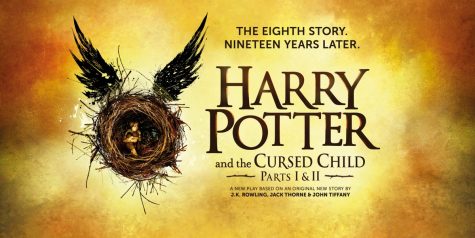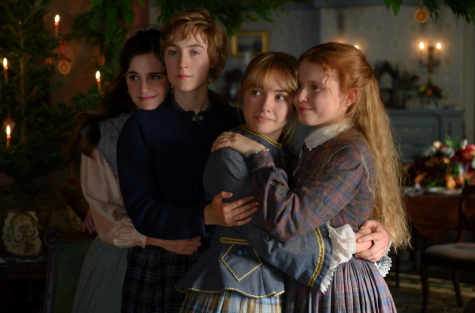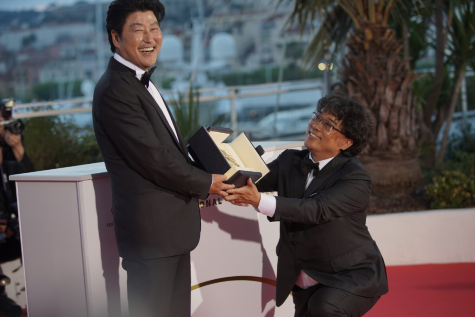‘The Queen’s Gambit’ Review
Despite focusing on the seemingly simple topic of chess, one of Netflix’s newest and exciting shows has proved to be a win for all.
While searching through Netflix one day in mid-October, I scrolled to their “Trending Now” section. It was here that I saw the icon for Scott Frank’s The Queen’s Gambit decorated with a little “Top Ten” ribbon in the corner. Though interested, I initially thought, “Gosh, I love Anya Taylor-Joy, but I can not bring myself to watch eight hours about chess in the 60s.” Despite these thoughts, a barrage of positive reviews and comments from my friends slowly convinced me to begin watching.
Adapted from Walter Tervis’ 1983 novel of the same name, The Queen’s Gambit focuses on Beth Harmon, played by Anya Taylor-Joy, a chess prodigy. First introduced to us as an adult in 1967, she is jumpy and unorganized despite her genius. We then turn to her 1950s childhood. At eight years old, she was orphaned, leading her to stay at the Methuen Home for Girls. A quick introduction to sedatives strengthens her addictive yet highly intelligent young mind. While at the orphanage, she is also taught how to play chess by Mr. Shaibel, the home’s janitor. Before long, she is beating almost anyone she comes against, including the local High School team all at once.
Joy delivers a performance that is calculated and measured. Each move she makes is incredibly thoughtful, mirroring her character’s playing style. She feels very human, something that I feel is lacking from many “genius” characters on the screen. She is complex in her balancing of life, relationships and chess.
Aside from the wonderful acting by Joy, the show also features a wide range of other talent, most of which can be recognized by viewers. Marielle Heller plays Alma Wheatley, Beth’s adoptive mother. Driven by empathy and a longing for more, Alma not only actively supports Beth’s career as a chess player, but also acts as her manager and confidant. Fans of the Harry Potter series may remember Harry Melling as Dudley Dursley but here, he plays Harry Beltik, the first champion Beth beats and a later friend of hers. Thomas Brodie-Sangster, another notable actor, portrays Benny Watts, another competitor against Beth who later becomes a mentor. Other noteworthy performances include Moses Ingram as Jolene, a childhood friend of Beth, Marcin Dorociński as Soviet player Vasily Borgov and Jacob Fortune-Lloyd as Townes, the first of Beth’s supporters.
The show, of course, also spends a lot of time focusing on gender: not in how remarkable it is that Beth is able to play chess, but in how she is able to do so extremely well when surrounded by men. Women’s history in regards to chess is rather limited when compared to men’s history in the game since it was not until 1978 that the first woman was awarded the title of Grandmaster. The show, however, spends very little time on her gender whereas similar pieces of media may have focused on it more. Nevertheless, in The Queen’s Gambit, Beth’s femininity is acknowledged in the early episodes but rarely brought up again by the plot or other characters. When her gender is discussed, it is often in a way that mocks society’s views on women. This is also often noted by characters such as Alma when she comments on Beth’s newfound fame, stating, “It makes you a celebrity.” However, Beth, understanding that her genius can be matched by many other male players, replies, “Yeah, for being a girl.”
The show’s score, composed by Carlos Rafael Rivera, is also used to demonstrate Beth’s advancements as a chess player. As episodes go on, the simplistic piano medleys morph into complex orchestrations. The music is stunning and perfectly placed in areas where tension needs to build. Both the compositions and editing help drive characterization and plot.
I would also be remiss if I did not bring up the show’s costuming, which is absolutely beautiful. 60s fashion has always been gorgeous, but costumer Gabriele Binder utilizes the styles of 60s icons in a way that also enhances Beth’s character. Her maturity and growth is actively shown as she ditches her orphanage uniform for more playful outfits and later, more elegant looks as she gains more worldly experience. Beth’s interest in fashion also emphasizes her femininity at times. While other shows or films might stray from any feminine symbolism for their heroine, it is used in The Queen’s Gambit to demonstrate the nuance that lies in women operating in male dominated areas. While Beth’s costuming is the most front and center, every other characters’ outfits are specifically tailored (no pun intended) to their identities.
So if you still have not gotten around to watching The Queen’s Gambit, I would highly recommend checking it out. There is definitely something in it for any viewer, and who knows, maybe it might inspire you to become the next Beth Harmon!


Emma Reilly is a senior who began Berkeley as a 9th grader. She’s a Co-Editor in Chief on The Fanfare who also enjoys being a part of Berkeley’s ATE,...

















